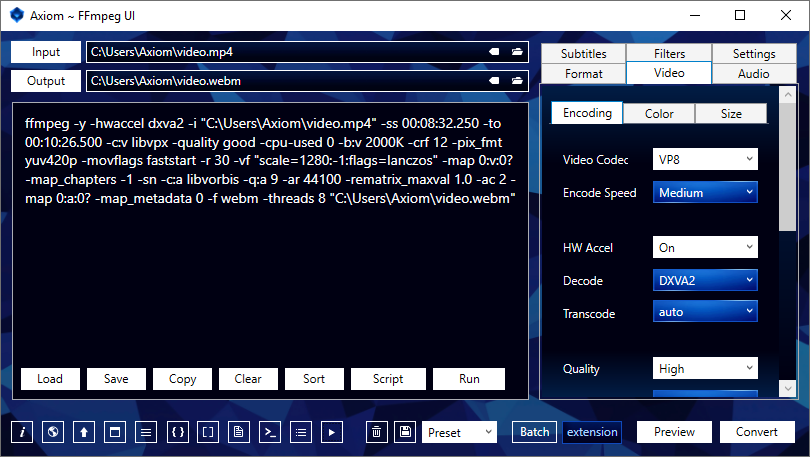

Right-click the Windows/Start button and select File Explorer. Once it's done, right-click on it and select “ Desktop (create shortcut)” under the “ Send To” menu. Click the Downloads folder in the left panel (you may have to click This PC first to find it). Right-click ffmpeg-git-fullbuild.7z (the file name will vary depending on the current release). Select Extract Here and wait for the files to extract. That's it, FFmpeg is ready, there is nothing to install on your computer! When you want to use FFmpeg to convert your media files, double-click on the shortcut that has been created on your desktop to open the FFmpeg prompt, right-click on it to paste a command generated above, then press Enter ↵ on your keyboard.Ĭreate a folder named ffmpeg in your home directory. Download the latest snapshot build from evermeet.cx. If you are confused about which file to choose, click here to download the. Zip file you need (note: the binaries are compiled for Mac OS X 10.9 and later, they will not run on earlier versions). On macOS 10.15 (Catalina) the binary has to be removed from quarantine.Įxtract the content in the folder that you have just created then open a Terminal window and type or copy/paste the following commands.Add the current working directory to PATH.Įcho "PATH=\"\$PATH:$(pwd)\"" > /etc/paths.Close the Terminal window for changes to take effect then re-open a new one.In the new Terminal window, confirm that FFmpeg is ready to be used.įfmpeg version x.x.x Copyright (c) 2000-20xx the FFmpeg developers.

That's it! You are now able to convert your media files using FFmpeg! Open a Terminal window, paste a command that you have generated using the FFmpeg Command Generator above, then press Enter ↵ on your keyboard.


 0 kommentar(er)
0 kommentar(er)
